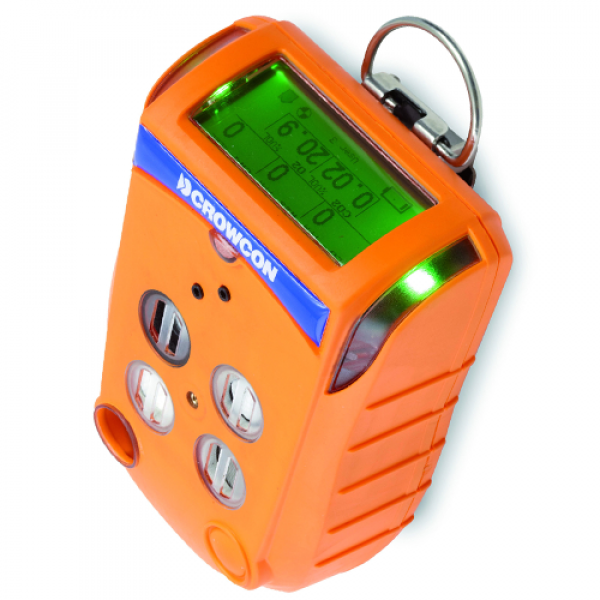
Gas-Pro – Portable gas detector for 5 gases
The Gas-Pro is a portable gas detector designed to protect workers and supervisors in confined, hazardous areas. The device offers the indication of up to 5 gases in a compact, robust device that withstands harsh environments and daily use.
The Gas-Pro has a compact and robust design that can optionally be equipped with an integrated pump. The Gas-Pro offers the user application-oriented solutions that ensure longer uptime and reduced set-up time. This handheld gas monitor is classified for use in hazardous locations and provides loud and bright audible, visual and vibrating alarms. The top-mounted display is backlit for ease of use, and the straightforward one-button solution makes deployment and training quick and easy.
Gas-Pro PID – Portable gas detector with PID technology
The Gas-Pro handheld PID gas detector is designed for industrial environments. The gas detector offers readings of up to 5 gases in a compact, rugged device that can withstand harsh environments and everyday use. Gas-Pro PID has an easy-to-read, top-mounted display that combines ease of use with user-focused features. An optional internal pump activated with the hose adapter makes pre-access testing extremely easy and allows the Gas-Pro PID to be worn in either pump or diffusion mode.
PID technology
Volatile organic compounds are organic compounds that are characterized by their tendency to vaporize rapidly at room temperature. Common substances that contain volatile organic compounds include solvents, paint thinners and adhesives, and vapors from fuels such as gasoline, diesel, heating oil, kerosene and aviation fuel. This category also includes many specific toxic substances such as benzene, butadiene, hexane, toluene, xylene and many others. Vapors from solvents, fuels and many other volatile organic compounds are extremely common in many work environments. Most have surprisingly low occupational exposure limits. For most volatile organic compounds, by the time a concentration is reached that can be measured with a combustible gas indicator, the toxic limit has already been exceeded. The amount of energy required to remove an electron from the target molecule is called the ionization potential (IP). The PID sensor used by Crowcon in the Gas-Pro PID is a 10.6 eV (electron volt) sensor and emits UV light. The target gas flows through the light source, and when the gas has an ionization potential of less than 10.6 eV, an electron is released from the gas compound. The gas then flows through the electrode pack, which senses any moisture released during this chemical reaction and, more importantly, gives a reading. The output is converted to the PPM readings that are displayed on the screen.
Areas of application
Locations such as fire brigades and first aiders, container shipping and industrial sectors such as pharmaceutical or plastics production. The aerospace sector is also an important market because of the need for PID sensors to inspect wing tanks.
The Gas-Pro PID comes preloaded with certain sensors.
In addition to the PID sensor, other gas combinations from the following gas sensors are also possible:
| Measurable gases | Measuring range |
|---|---|
| Flammable Gases | 0-100% LEL |
| Carbon Dioxide (CO2) | 0-5% Vol. (often used in breweries) |
| Carbon Monoxide (CO) | 0-2,000 ppm |
| Carbon Monoxide (CO) | 0-500 ppm |
| Carbon Monoxide (CO) | (hydrogen filtered) 0-2,000 ppm |
| Chlorine (Cl2) | 0-5 ppm |
| Combination sensor (CO/H2S) | 0-500 ppm / 0-100 ppm |
| Hydrogen Sulfide (H2S) | 0-100 ppm |
| Nnitrogen Dioxide (NO2) | 0-20 ppm |
| Oxygen (O2) | 0-25% Vol. |
| Ozone (O3) | 0-1 ppm |
| Sulfur Dioxide (SO2) | 0-20 ppm |
| Chlorine Dioxide (ClO2) | 0-1 ppm |
| Nitrogen Monoxide (NO) | 0-100 ppm |




